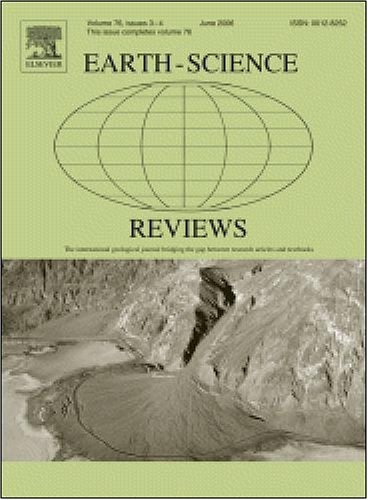Fossil leaf cuticle: Best practices for preparation and paleo-CO2 analysis
IF 10.8
1区 地球科学
Q1 GEOSCIENCES, MULTIDISCIPLINARY
引用次数: 0
Abstract
Leaf cuticle is the waxy envelope that protects leaves from desiccation, UV damage, and abrasion. The cuticle encodes information about a plant's chemistry and leaf epidermal and stomatal cell morphology. Fossil leaf cuticle has been used to determine taxonomic affinities for almost two centuries and recognized in recent decades for its value in reconstructing paleoenvironments and paleoclimates, especially atmospheric CO2. Fossil leaf cuticle preparation techniques are typically reported as single workflows tied to individual studies, starting with finding fossils in the field through the steps of preparing cuticle for chemical and morphological analysis, including decisions about type of microscopy and level of sampling effort at different spatial scales (number of fields-of-view, leaves, and species). The siloed nature of these publications makes finding appropriate methods and workflows for new studies difficult, especially for less experienced researchers. Here, we attempt to synthesize a breadth of existing workflows and make recommendations to guide methodological decision-making for new studies, with a particular focus on paleo-CO2 reconstruction via a proxy based on leaf gas-exchange principles (the Franks model). We describe and annotate chemical procedures for preparing cuticles for analysis and include recommendations regarding leaf conditions for which each is most appropriate. For studies making repeated measures of morphology (e.g., stomatal density), we describe a resampling routine that can guide decision-making, in real time, about sampling effort.
求助全文
约1分钟内获得全文
求助全文
来源期刊

Earth-Science Reviews
地学-地球科学综合
CiteScore
21.70
自引率
5.80%
发文量
294
审稿时长
15.1 weeks
期刊介绍:
Covering a much wider field than the usual specialist journals, Earth Science Reviews publishes review articles dealing with all aspects of Earth Sciences, and is an important vehicle for allowing readers to see their particular interest related to the Earth Sciences as a whole.
 求助内容:
求助内容: 应助结果提醒方式:
应助结果提醒方式:


